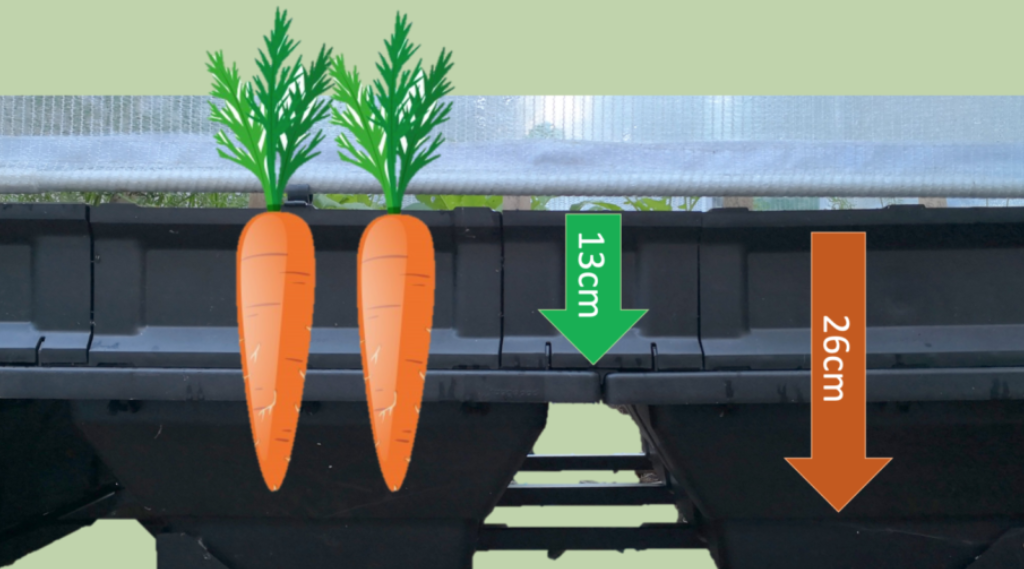The year has gone incredibly fast and as gardeners everywhere are starting to clear plants and garden accessories away for the autumn and winter months, if you have a Vegepod it can be a very different story. There are many Vegepod owners just now sowing seeds for a winter harvest - plus if that promised Indian summer does arrive, won’t we all just be thankful for sowing those seeds!
What to Plant NOW
We mentioned last month that if you haven’t sown your winter salads, don’t delay too long. There is still enough time to get these into some nice fresh compost in your Vegepod before it gets too cold. Harvesting fresh salad leaves such as lambs lettuce (great for over winter delicious salads) and winter purslane (quick to grow and full of vitamin C) feels a bit like defying the odds when you harvest what’s seems like only a summer crop, during the colder months. Don’t forget some winter cress and spinach for your packed lunch sandwiches as well. Very satisfying! Onions and shallot sets can still be planted along with garlic cloves as well to grow over winter, ready for harvesting next year.
If you have a large Vegepod, brassicas can be grown no problem and if any of your seeds, salads or brassicas need extra protection, take a look at the hothouse cover for added warmth and protection during winter. Small kale plants can still be planted as the leaves grow quickly and they can be harvested all the way through the winter.
Hopefully you’ve already planted your sprouts, cabbage and cauliflower so they are ready for Christmas dinner. Harvesting them along with Christmas potatoes makes the festive dinner so much more tasty. Don’t forget to plant some pansies and violas for Christmas cocktails and decorating your desserts. They can be sugar coated and top the fruit cake!
There’s so much more the Vegepod can be used for though. Are you propagating with cuttings? There are many annual plants that can be overwintered, and the pod with the winter cover creates the perfect environment for cuttings to root and grow strong, ready for planting out in spring. Why not try peppers, herbs, fuchsia and geraniums. Take your cuttings, put the cut end into some rooting hormone and then either pot them and place the pots in the Vegepod or plant them straight in the pod. Don’t forget to label them and be ready for plenty of free plants next spring.
Vegepod Positioning
One of the added advantages of having a trolley stand is that you can move your pod around seasonally to maximise sunlight. As the days get shorter and the light dims, really consider where your Vegepod is positioned in your garden so you can ensure it is in the best possible position for maximum winter sunlight.
What to Cook
Carrots have a long cropping season and if you have been successionally sowing you should still have plenty to harvest right now. Is there anything as nice as lifting those vibrant orange, white or even purple roots out of the soil?
The flavour is unbeatable compared to supermarket bought and even if you’ve grown some with wonky roots, they are still perfect. As the nights draw in, a warming carrot soup has to be on the menu. There is one way, that no matter what time of year it is, carrots can be cooked and devoured with the most delicious flavour - with syrup. Sweetened and blackened carrots are so easy to make and even better when reheated the next day.
Christmas Carrots
Peel and slice your carrots and lay on an oiled baking sheet on a baking tray and a big drizzle of syrup plus some salt and pepper. Cook on 220C for about 20 minutes and allow one side to get blackened. Then turn them over for another 5 minutes or so. Perfect to be served at Christmas time along with all the other trimmings.

Picture: A tip when growing carrots in a Vegepod is to always ensure they grow in the deepest part of the pod, avoiding the joins between pods. That way you'll get a full foot of growing depth.
